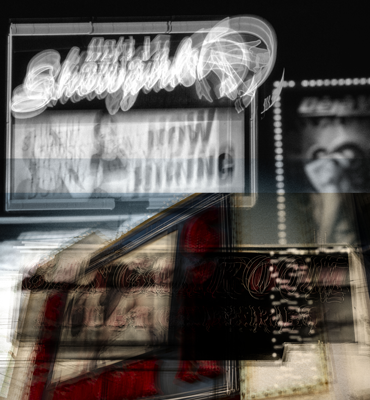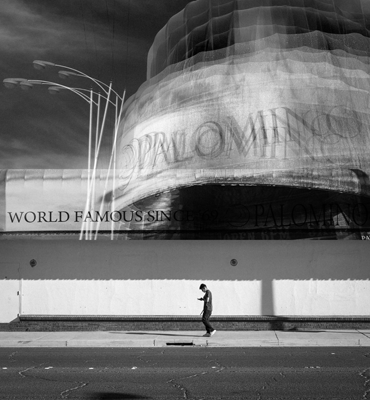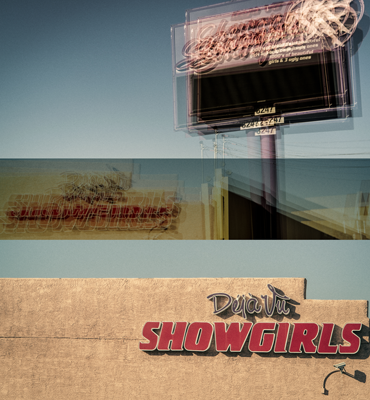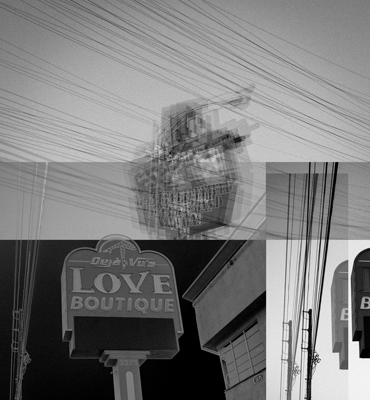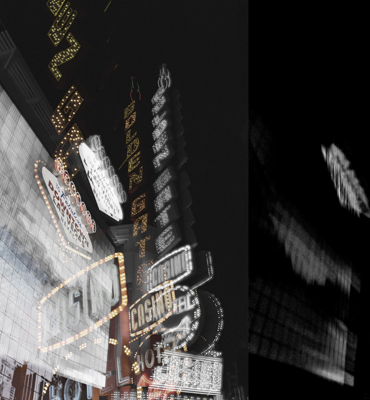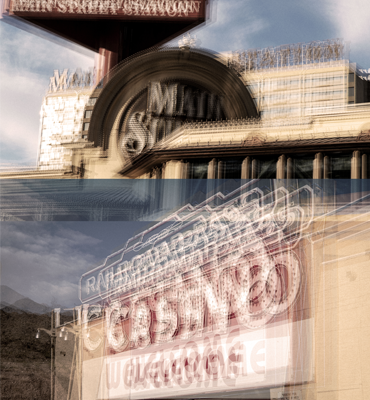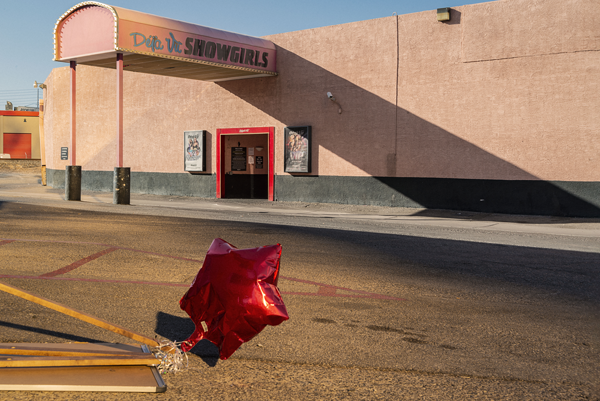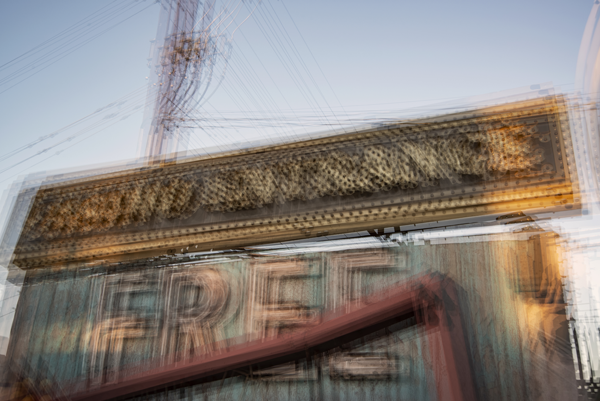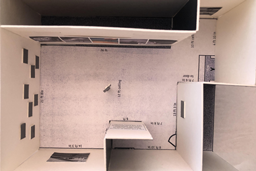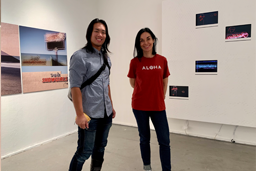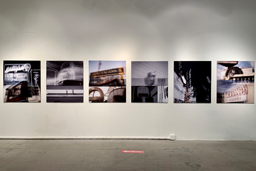"In Plain Sight" is an exhibition about the sensory experiences of urban space, using the city of Las Vegas as the field of observation. The show is about observing and processing the myriad surfaces of visual layers and soundscapes one can experience in Las Vegas—through light, time, movement, and space. It aims to capture these sensual experiences between representation and abstraction through photography and video works.
‘In Plain Sight’ explores the multi-faceted layers of Sin City. It exposes the complexities and contradictions in plain sight, revealing both the legendary urban and the fake of Las Vegas, a city that is surrounded by myth and ever-present in the American psyche.
The exhibition includes a series of large-format photographs and short videos with soundscapes. On show is a group of 8 large-format prints that display superimposed view angles collapsing the experience of time into a single moment; in contrast to the 14 video works that stretch a similar experience, like in a film, over time.
In Las Vegas, everything is immediately in your face and first in plain sight. However, it is not always what it seems to appear: there are complexities, contradictions, and hidden layers, and I am interested in mapping these layers and exposing their connections and deferred dreams.
While I am drawing from a diverse spectrum of visual and cultural sources, my interest is in creating densely layered and digitally manipulated imagery that is both abstract and figurative at the same time. The results are compressed images that go beyond the surface, offering a cumulative experience with multiple angles and optical intensity.
Like Scott Brown, Venturi, and Izenour wrote in their seminal book ‘Learning from Las Vegas’ [2], Las Vegas creates a new paradigm in architecture where the idea of signage and billboard has a particular meaning. Signage becomes a substitute for other things and is tied to the car culture of the city. The view from the car changed cities and the perception of urban landscapes. Neon signs and billboards are part of Las Vegas’s history - the Neon City. It is an extreme case, where the sign itself can be larger and more important than the actual buildings behind the sign or billboard.
In Las Vegas, what prevails is communication overload over urban space. Communication in this city happens as a simultaneous, synchronous, and relentless palimpsest of signs, images, and sounds. Neon signs, large-format billboards, LED screens, and recently entire LED facades form the urban experience. Here, urbanity is fluidic, never static.
Over the past five decades, Las Vegas and the Strip have become a metaphor for a particular brand of idiosyncratic, individualistic urbanism, based on the presumption that urban forms are instant and interchangeable. This urban fluidity and unsteadiness influence the city's image and the way people behave. People—like avatars, are invited to experience a city that could be considered an avatar city itself. A city that is "a visible manifestation or embodiment of an abstract concept; an archetype." [1]
In this aspect, Las Vegas exhibits a perfectionized marketing image, displaying boundary-less entertainment and phantasies—the embodiment and abstraction of an idealized and perfected entertainment city.
I am capturing the movement within the city through the changing perception of urban spaces from the viewer's viewpoint (camera) and the relationship it establishes with the images' framing. Having people in the images is less relevant for me; it is more about the layers of sound, images, and light reflections.
Abstraction works against the photograph that wants to represent realistically. John Berger noted that photography is not about the accurate representation of what is in front of the camera; it is about creating another reading, another layer of reality, and the intricate connections in an urban setting that can be discovered.[3]
"I think I've said this before many times—that photography allows you to learn to look and see. You begin to see things you had never paid any attention to. And as you photograph, one of the benefits is that the world becomes a much richer, juicier, visual place. Sometimes it is almost unbearable — it is too interesting. And it isn't always just the photos you take that matters. It is looking at the world and seeing things that you never photograph that could be photographs if you had the energy to keep taking pictures every second of your life." -- Saul Leiter [4]
References
1. Online dictionary, www.dictionary.com
2. Venturi, R., Scott Brown, D. and Izenour, S. Learning from Las Vegas. MIT Press, 1972.
3. Berger, John; Dyer, Geoff (ed). Understanding a Photograph. Aperture, NYC, 2013. 57.
4. "Saul Leiter: The Quiet Iconoclast." Interview with Dean Brierly, photographyinterviews. blogspot.com. April 22, 2009.
5. Bruno, Giuliana. Surface: Matters of Aesthetics, Materiality, and Media. University of Chicago Press, 2014.
